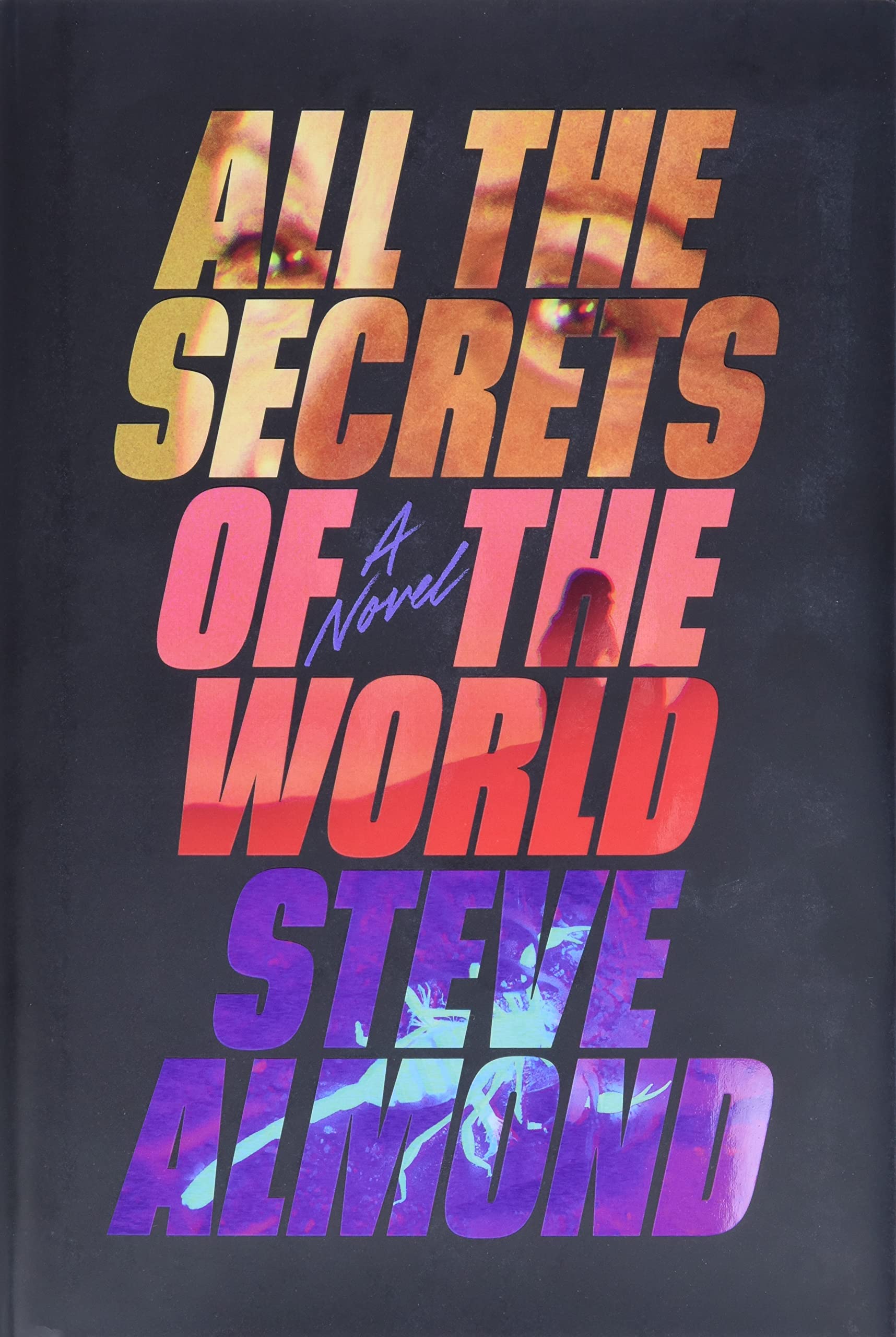All the Secrets of the World, by Steve Almond. Zando Projects, 416 ppl, $28.
For twenty years, Steve Almond has enjoyed a widely-lauded career as a writer of short stories and nonfiction and yet his many readers have wondered, “Where’s the novel?” Finally, Almond has answered with All the Secrets of the World, a most excellent debut. The story spans five “books,” in alternating points of view, and takes place in Sacramento, California, during Ronald Reagan’s first year as president (1981). In fact, Nancy Reagan’s overweening concern for crime frames the book, as the First Lady makes several cameos, serving as Almond’s avatar of all that is wrong with the high and mighty. Very much is wrong in the world Almond constructs: the cops are crooked, the rich are arrogant; the dominant culture is oppressive and racist—and all of it rings too true of the world we live in now.
A smart thirteen-year-old Latina, Lorena Saenz (Lo), has no idea what she’s in for when her hippie science teacher assigns her to do a project with Jenny Stallworth, the middle school’s Alpha beauty who would otherwise never have reason to look at Lo, much less speak to her. The Stallworths are the quintessential upper-middle class, two-child, two-car, big-house family of white privilege. Their abundant life awes Lo, whose father is long gone and whose undocumented mother cleans hospital rooms for a living, while her angry, go-nowhere older brother, Tony, seems destined for prison or an early grave. The science project allows Lo to spend an increasing amount of time at the Stallworth house, where Jenny’s father takes an increasing interest in her. Almond’s keen eye captures the confused psychology of attraction that begins to entrap Lo. When she sees Mr. Stallworth staring at her, Lo “felt a shiver of fear, and this fear, for some unfathomable reason, pleased her.”
A biologist, Mr. Stallworth studies scorpions in their desert habitat (not far from Sacramento). When the family invites Lo on a camping trip, Mr. Stallworth shows her luminescent scorpions in the dark of night. Lo is enthralled and hopes to make scorpions the subject of their science project. But Jenny will have nothing to do with it and, instead, insists that they make their project about astrology, which Lo knows is ridiculous but she acquiesces anyway. At one point, Mr. Stallworth says to Lo, “You don’t have to play dumb. . . . It’s okay to be smart.” Clearly he wants her to live up to her potential but it’s clear too that he wants something more.
Scorpions become the overriding metaphor of the novel, representing all that we (of the dominant culture) don’t understand. Says one scorpion advocate: “Who among all the creatures of the world must suffer as the scorpion does?” Lorena’s fascination with the creatures compels her to theorize about their amazing illumination—a theory that Mr. Stallworth more or less steals later. And she understands what most do not: “Lorena began to imagine the scorpion not as the hunter but as the hunted.” The scorpion’s first line of defense is not to attack but to seek shelter, a fact that underscores the novel’s central theme of hiding when under threat—hiding the many secrets and lies that complicate All the Secrets of the World.
Lo’s mother cautions: “Don’t think some boy is going to give you a future. Use your brain, mija.” Her hippie teacher is similarly concerned because Lo is making no plans for her future, even though she could easily win a college scholarship (at this point she’s fourteen and a high school sophomore). Is Lo too smart for her own good or not smart enough? She worries: “Her behavior felt guided by animal instinct. Perhaps she was something like a scorpion herself, groping in the dark at perils she could only vaguely sense, aglow with an alarm that would become visible only after it was too late.” She apprehends that Jenny’s older brother, an arrogant jock, is secretly gay. She sees, too, that Mr. Stallworth has secrets of his own. And then the man disappears under suspicious circumstances, his jeep abandoned in the desert, the front seat stained with blood.
Because her brother, Tony, had a nearly violent altercation with Mr. Stallworth when he caught the man embracing his sister, Tony becomes the primary suspect of Mr. Stallworth’s apparent murder. The cops couldn’t be happier because here, after all, is the stereotypical perp: an underprivileged minority, recently kicked out of the Navy, formerly associated with a gang, and without a substantiated alibi for the night of the alleged murder. Blinded by aimless rage and thoroughly guileless about his prospects, Tony falls into the abyss of America’s twisted legal system and nobody seems to care, except his mother and sister.
Quickly, the novel becomes a page-turner as the media makes Stallworth’s disappearance scandalous news and Lo’s once-quiet life crumbles. Lorena insists that Stallworth is alive and hiding because she has seen the now-missing evidence. With the mind of a scientist, she knows how to assess, conjecture, and theorize. But no one believes her until, by force of will, she compels one of the investigators, Pedro Guerrero, to track down the truth. The Powers That Be go to great lengths to obfuscate such truth and thwart justice, if for no other reason than convenience. In his dissection of so many misdeeds, Almond is unsparing and inspires such outrage that the reader may wonder if the good guys will ever win. All the Secrets of the World is a thoroughly nuanced a story, with characters too complicated to predict, and so there can’t be any winners, really. Still, although nearly everyone in this exceptional novel suffers consequences as their lies and secrets are exposed, a few demonstrate enough humanity and grace to give us hope.
—Ron Tanner

